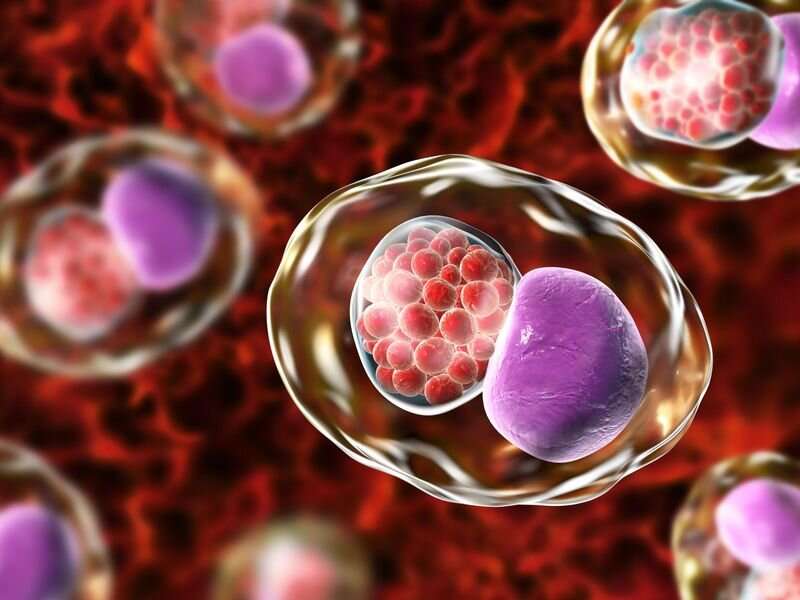
Considered one of the most common sexually transmitted diseases, chlamydia can spread easily and often without obvious symptoms.
And although chlamydia cases have declined in recent years, the U.S. Centers for Disease Control and Prevention chalks that up to reduced screening for sexually transmitted diseases (STDs) during the pandemic. It is estimated that 1 in 20 sexually active women between the ages of 14 and 24 gets chlamydia, according to the American Sexual Health Association (ASHA).
The side effects of untreated infection are significant, per the CDC: Chlamydia can permanently damage a woman’s reproductive system, and can also cause a potentially fatal ectopic pregnancy (one that occurs outside the womb).
What is chlamydia?
Chlamydia is a bacterial infection that can be treated effectively if caught early, according to the Mayo Clinic. Often, it is symptom-free, making it easy to spread before someone realizes they have it. Between 50% and 70% of those who catch it don’t know they’ve caught it—a fact that has earned chlamydia the nickname of the “silent infection.”
Research published recently in the Journal of Adolescent Health found that an opportune time to screen young women for chlamydia would be when they get long-acting birth control from their doctors.
Is chlamydia curable?
Because it is a bacterial infection, chlamydia is curable with antibiotics when caught early, according to the Cleveland Clinic. However, any damage already caused by the infection cannot be reversed. The ASHA warns that women are at high risk for reinfection and should retest within three or four months after treatment.
Meanwhile, research published recently in the Lancet Infectious Diseases journal showed a vaccine developed by a British and Danish team was safe and effective in a small, randomized trial. Although the researchers acknowledged that the vaccine has a long way to go, it produced the immune response they had hoped for, and none of the women developed any serious side effects.
How do you get chlamydia?
Chlamydia spreads through the exchange of bodily fluids, typically through intercourse, oral sex and anal sex, though it can also be spread through contaminated sex toys. It often goes undetected and therefore can be passed quickly between sexual partners. The Cleveland Clinic reports any sexually active person can contract the disease, with increased risk for people under the age of 25. The risk is even higher for gay men, and Black populations. The ASHA reports that women can even spread chlamydia to their babies during delivery, causing pneumonia, severe eye infections and other complications.
Can you get chlamydia from kissing?
According to the Cleveland Clinic, not all exchanges of bodily fluids can spread chlamydia. You cannot get it from kissing, sharing food or drinks, holding hands, using the toilet after someone, or from a cough or sneezing.
Chlamydia symptoms
Although it is known as the “cloak” for its lack of obvious symptoms, signs of chlamydia do exist, according to the Mayo Clinic. Most STDs affect both men and women, but in many cases the health problems they cause can be more severe for women. Chlamydia is no different in this regard.
The ASHA categorizes these symptoms as follows:
Chlamydia symptoms in women
- Discharge from the vagina
- Painful urination
- Painful intercourse
- Bleeding between cycles and after intercourse
- Increased urge to pee
- Abdominal pain
Untreated chlamydia in women can lead to pelvic inflammatory disease (PID), which is both life-threatening and a threat to a woman’s fertility.
Chlamydia symptoms in men
- Mucus-like or clear discharge from the penis
- Painful urination
- Swollen testicles
Untreated chlamydia in men can lead to inflammation of the prostate and testes, infertility and scarring of the urethra. A recent study published in the journal Human Reproduction found a link between the presence of the bacteria in men’s testes and infertility.
Chlamydia treatment
There are different antibiotic options for the treatment of chlamydia. A doctor will decide which is best, depending on the individual patient.
Although it can easily be treated and seems “harmless,” the Cleveland Clinic recommends never trying to wait out a chlamydia infection. If left untreated, it can cause serious health problems and you could spread it to others.
Chlamydia medication
The CDC recommends three different options for the treatment of chlamydia.
- Doxycycline: Taken twice a day for seven days
- Azithromycin: Taken as a single treatment. This is the preferred option for pregnant women, according to the Cleveland Clinic
- Levofloxacin: Taken once per day for seven days
The ASHA recommends that all regimens be taken to completion, even if symptoms improve. Patients should also abstain from sex during treatment and get tested afterwards, to be sure they are clear of the infection.
Journal information:
Lancet Infectious Diseases
,
Journal of Adolescent Health
,
Human Reproduction
Source: Read Full Article
